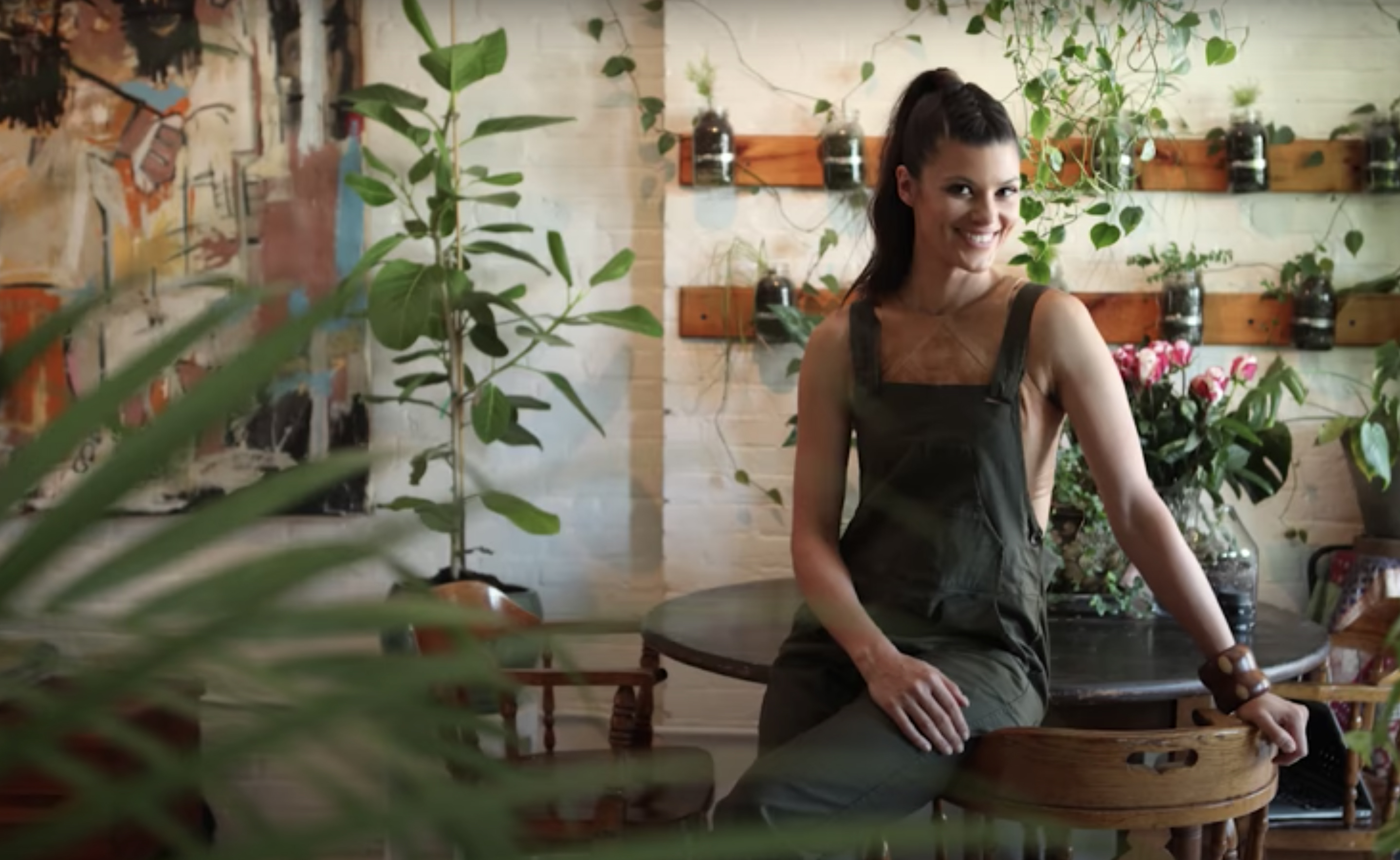Home tour: house plant obsessed New Yorker grows 'jungle' in her apartment
If you think you're a proud plant parent, wait until your see this apartment. Filled with house plants, it is like a jungle in New York. Watch the video house tour


If you think your love of house plants has got out of control (especially since lockdown) then you need to see the Brooklyn apartment of Summer Rayne Oakes. Summer is an environmentalist and surrounds herself with greenery, giving her guests the feeling of walking through a forest whenever they visit.
The lush greenery is not just for aesthetics though – Summer grew up in the country and when she moved to New York, she wanted to take a little bit of that environment with her. It all started with the ever popular fiddle leaf fig and her first plant baby is now several feet tall, taking pride of place in her bedroom workspace.
She admits her love of plants has become borderline 'obsessive' and she recently turned her closet into a kitchen-grow garden, giving her edible plants somewhere to reside in the full sun of the large windows. With over 500 plants and 150 different species to speak of, we would be inclined to agree that Summer's space is a little unusual – we certainly haven't come across many homes with a banana tree in them... However, the lushness of all the plant life really does create a little oasis in the middle of New York and we could totally see ourselves moving in.
Watch the video about Summer's passion below, then check out the best indoor plants to get your own at-home jungle started.
Well, we have certainly been inspired to add more greenery to our rooms. With a little time and money, it is amazing how much house plants can transform a home. And we will certainly be giving our plants some musical attention – here's hoping they love a bit of Beyoncé!
How to be the perfect plant parent
Keeping house plants can feel like a full time job – this is a life you have to take care of after all. But these pointers will make sure your green thumbs are glowing and fewer plant babies end up destined for the compost heap in the sky...
1. Pick plants that are easy to care for
You – and your plants – will be much happier when you choose plants that are easy to care for, rather than ones that just look amazing. Some of the most striking plants are notoriously hard to look after, so step away from the orchids and maidenhair ferns and get yourself an easy going aloe vera or the hardy aspidistra. Once you have got used to being a plant parent, you can expand your collection to include pickier plants.
Get small space home decor ideas, celeb inspiration, DIY tips and more, straight to your inbox!
2. Put the plant where it wants to live, not where it looks nice
Ahhh Instagram has so much to answer for on this one. Sure that fiddle leaf fig looks so cute in a big rattan belly basket by the hearth, but that baby hates a draft and will let you know about it. If you have a spot in mind that needs a bit of greenery, research what plant will suit it rather than forcing your new specimen to grin and bear it – because it won't. Find shade lovers for darker north-facing rooms and sun worshippers for a window sill spot.
3. Learn about watering
So simple, but so often ignored is how to water properly. Unfortunately what works for one plant will not work for another, so read the watering instructions well and invest in the right misters, spray bottles and watering cans for the job. Some plants need little and often so get them on a watering schedule. Others don't need watering until their soil looks rather dry, at which point they want a big drink. Take just 10 minutes to research what your plant needs so that you never let it shrivel or become overwatered. If you know how it rains in the plant's natural habitat, this gives you a good idea of how to water it at home.
4. Buy the right potting compost
There is such a thing as house plant compost, but don't assume it suits all plants just because they live indoors. Succulents need a well-draining soil with lots of perlite to replicate their arid desert conditions. Leafier plants like philodendrons prefer a bit more water so you might want to add a little vermiculite for aeration and water/nutrient retention. See what different plants need and re-pot accordingly.
5. Don't forget drainage
Plants need water to survive, but most HATE being water logged. It leaves them vulnerable to root rot and pests, so you need to pot them with good drainage to mimic what would happen naturally in the wild. Firstly, make sure your pot has holes in the bottom. Either plant in a plastic pot inside a pretty ceramic pot with a layer of stones between them to allow drainage, or buy a pot with holes and a stand to collect extra water (but don't let the plant stand with soggy roots).
More on house plants:
- Read all about indoor gardening
- How to make a terrarium

Lindsey is Editor of Realhomes.com and Editor in Chief for Home Ecommerce at Future. She is here to give you aspirational, yet attainable ideas for your home and works with her team to help you get the best buys, too. She has written about homes and interiors for the best part of a decade for brands including Homes & Gardens, Ideal Home and Gardeningetc and isn't afraid to take the inspiration she finds at work into her own space – a Victorian terrace which she has been (slowly) remodelling for the last eight years. She is happiest sipping a cup of tea with a cat on her lap (if only she had a cat).